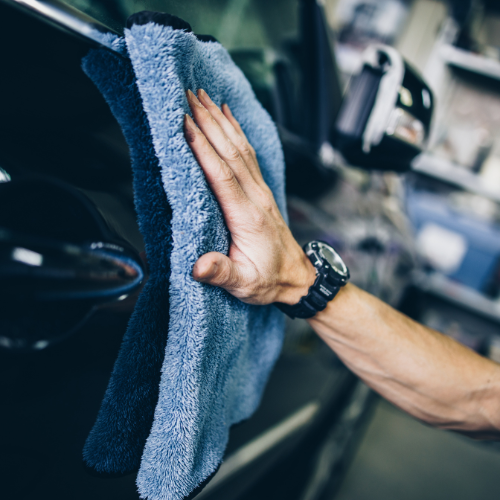As the long winter months come to an end and the sun starts to shine brighter, it’s time to give your car the attention it deserves. Spring cleaning your car is not just about vanity; it’s about maintaining a clean and well-functioning vehicle. A thorough cleaning not only enhances the appearance of your car but also contributes to its longevity and value. In this article, we will provide you with a comprehensive guide to spring cleaning your car, covering both the interior and exterior, as well as essential maintenance tasks and organizational tips.
Exterior Cleaning
The first step to a sparkling car is a thorough exterior cleaning. Start by washing the car’s exterior using a high-quality car shampoo and a soft sponge or microfiber cloth. Rinse it thoroughly to remove any soap residue. Pay special attention to the areas prone to dirt and grime, such as the front grille, bumpers, and wheel wells.
Next, clean the windows and mirrors using a glass cleaner and a lint-free cloth. Make sure to reach all corners and edges for a streak-free finish. Don’t forget to wipe the windshield wipers as well, as they can accumulate dirt and reduce their effectiveness.
Scrubbing the tires and wheels is an essential part of the cleaning process. Use a wheel cleaner and a specialized brush to remove brake dust and grime from the rims. For the tires, a tire cleaner and a scrub brush will help restore their natural shine. Rinse thoroughly to remove all cleaning products.
To give your car’s body a polished and protected look, consider applying a wax or sealant. This step not only enhances the shine but also adds a layer of protection against environmental elements. Follow the product instructions carefully for best results.
Interior Cleaning
Now that the exterior is sparkling, it’s time to turn your attention to the interior. Start by removing any clutter and unnecessary items that have accumulated over time. Clear out the glove compartment, center console, and door pockets, and discard anything you don’t need.
Next, vacuum the seats, carpets, and floor mats to remove dust, dirt, and debris. Use a brush attachment to reach into crevices and corners. If there are any stains on the upholstery or carpets, consider using a fabric cleaner or a specialized stain remover.
Clean the dashboard, console, and door panels using a mild all-purpose cleaner and a microfiber cloth. Pay attention to buttons, knobs, and air vents, as they tend to collect dust and grime. For leather surfaces, use a leather cleaner and conditioner to maintain their softness and prevent cracking.
To freshen up the air inside your car, consider using a car air freshener. There are various options available, from scented sprays to vent clips, so choose the one that suits your preference.
Maintenance Tasks
Spring cleaning your car is also an opportunity to perform essential maintenance tasks. Start by checking and replacing worn-out windshield wipers, as they are crucial for clear visibility during spring showers. Inspect and replace cabin air filters, as they can become clogged with dust and debris, affecting air quality.
Check and top up fluids such as oil, coolant, and washer fluid. Consult your car’s manual for the recommended levels and types of fluids. Inspect the tires for wear and tear, and consider rotating them to ensure even wear. Additionally, check the car battery’s condition and replace it if necessary to prevent unexpected breakdowns.
Inspect the brake pads for signs of wear and replace them if they are worn out. Properly functioning brakes are essential for your safety on the road.
Organizing and Storage
A clean car is not just about tidiness; it’s also about efficient organization. Install organizers such as car seatback organizers, trunk organizers, or console
organizers to keep your belongings in order. This will prevent items from rolling around or cluttering up the interior.
Keep necessary documents such as registration, insurance, and maintenance records organized in a folder or document holder. This ensures you can easily access them when needed. Don’t forget to keep a basic toolkit in your car for emergencies, including a jack, lug wrench, and jumper cables.
Consider storing emergency supplies and equipment in your car, such as a first aid kit, flashlight, emergency blanket, and roadside assistance kit. These items can be invaluable in unexpected situations and provide peace of mind during your journeys.
Special Considerations
For those looking to go the extra mile, consider detailing your car’s interior and exterior. Detailing involves a deep cleaning and restoration process, leaving your car looking and feeling like new. You can either tackle this task yourself or seek professional detailing services for a more comprehensive job.
If your car has a convertible top or a sunroof, pay special attention to cleaning and treating these areas. Follow the manufacturer’s recommendations for the appropriate cleaning products and methods to maintain their functionality and appearance.
For added protection, consider applying protective coatings to your car’s paint or trim. Ceramic coatings or paint sealants can provide an extra layer of defense against UV rays, dirt, and minor scratches. Keep in mind that these coatings require proper application and maintenance to ensure their effectiveness.
Conclusion
Spring cleaning your car is an essential task that goes beyond mere aesthetics. A clean and well-maintained vehicle not only enhances its appearance but also contributes to its longevity and value. By following the steps outlined in this guide, you can enjoy a fresh and tidy car both inside and out. Remember to incorporate regular cleaning and maintenance routines to keep your vehicle in its best condition year-round. With a little effort, your car will be ready to hit the road with renewed freshness and a sense of pride.







